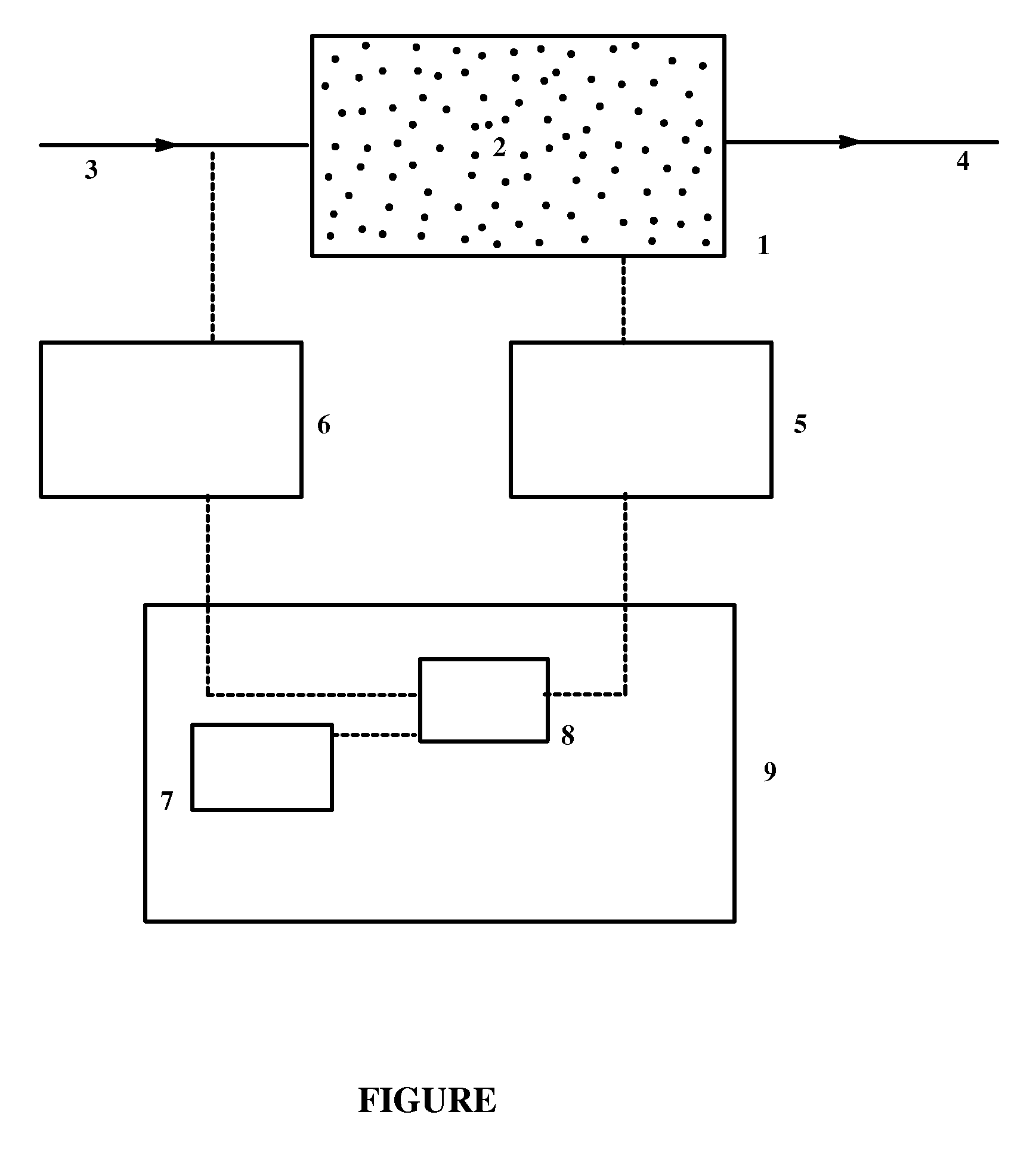Process and systems for the epoxidation of an olefin
a technology of epoxidation and olefin, applied in the field of epoxidation of an olefin, can solve the problems of aging-related performance decline of silver based catalysts, undetectable large-scale selectivity variations,
- Summary
- Abstract
- Description
- Claims
- Application Information
AI Technical Summary
Benefits of technology
Problems solved by technology
Method used
Image
Examples
example 1
[0078] A catalyst, as defined in U.S. Pat. No. 4,766,105 (EP-A-266015), containing silver, rhenium, cesium, lithium and tungsten on α-alumina and having a theoretical selectivity S0 of at least 89% at 260° C. in the fresh state was employed in the following experiment.
[0079] In the experiment ethylene oxide was produced as follows. A sample of the crushed catalyst (0.8-1.4 mm) was loaded into a micro-reactor consisting of a 3 mm internal diameter stainless steel U-shaped tube. The U-shaped tube was immersed in a molten metal tin / bismuth bath (heat medium) and the ends were connected to a gas flow system. The weight of the catalyst and the inlet gas flow rate were adjusted as to achieve a gas hourly space velocity of 5000 Nl / (l.h). The inlet pressure was 1870 kPa (absolute). The feed to the reactor comprised ethylene at a concentration of 28 mole-%, oxygen at a concentration of 7.4 mole-%, carbon dioxide at a concentration of 5.2 mole-%, ethyl chloride at a concentration of 2.9 ppmv...
example 2
[0082] A catalyst, as defined in U.S. Pat. No. 4,766,105 (EP-A-266015), containing silver, rhenium, cesium, lithium and sulfur on α-alumina and having a theoretical selectivity S0 of 93% in the fresh state is employed in the following experiment. The above value of S0 was determined by measuring selectivities in a range of gas hourly space velocities, each time at 30% ethylene, 8% oxygen, 5% carbon dioxide and 1400 kPa, the reaction temperature being 260° C., and extrapolating back to zero oxygen conversion.
[0083] In the experiment ethylene oxide is produced as follows. A sample of the crushed catalyst (0.8-1.4 mm) is loaded into a micro-reactor consisting of a 3 mm internal diameter stainless steel U-shaped tube. The U-shaped tube is immersed in a molten metal tin / bismuth bath (heat medium) and the ends are connected to a gas flow system. The weight of the catalyst and the inlet gas flow rate are adjusted as to achieve a gas hourly space velocity of 3300 Nl / (l.h). The inlet pressu...
PUM
| Property | Measurement | Unit |
|---|---|---|
| reaction temperature | aaaaa | aaaaa |
| reaction temperature | aaaaa | aaaaa |
| temperature | aaaaa | aaaaa |
Abstract
Description
Claims
Application Information
 Login to View More
Login to View More - R&D
- Intellectual Property
- Life Sciences
- Materials
- Tech Scout
- Unparalleled Data Quality
- Higher Quality Content
- 60% Fewer Hallucinations
Browse by: Latest US Patents, China's latest patents, Technical Efficacy Thesaurus, Application Domain, Technology Topic, Popular Technical Reports.
© 2025 PatSnap. All rights reserved.Legal|Privacy policy|Modern Slavery Act Transparency Statement|Sitemap|About US| Contact US: help@patsnap.com

